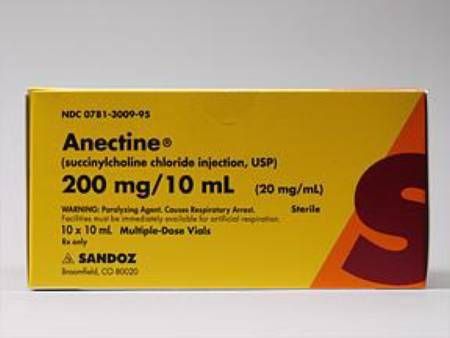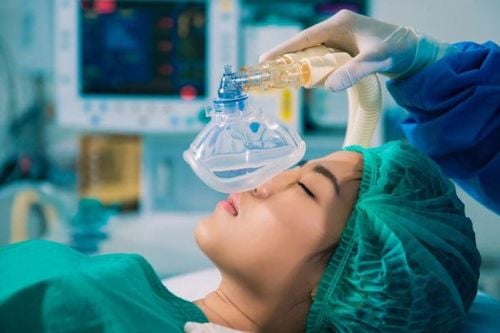This is an automatically translated article.
The article was written by Specialist Doctor II Nguyen Trung Thanh - Anesthesiologist and Anesthesiologist, Department of Surgical Anesthesia - Vinmec Central Park International General Hospital.Anesthetics are chemicals that, when introduced into the body in a certain dose, temporarily lose consciousness but still maintain vital functions. Currently, there are two types of anesthetics used to anesthetize patients: inhalation anesthetics and intravenous anesthetics.
1. What is an inhalation anesthetic?
Inhalation anesthetic is a drug that has an anesthetic effect when the patient inhales anesthetic gas into the lungs through a specialized machine.
Inhalation anesthetics have 2 types:
Gaseous form: dinitrous oxide (also known as laughing gas). Volatile liquid: halogenated anesthetics such as halothan, isoflurane, sevoflurane, desflurane.
2. Is inhalation anesthetic used to maintain or induce anesthesia?
Inhalation anesthetics are commonly used to maintain anesthesia in most cases. In some special cases, such as in children, the anesthesiologist may use a pleasant smelling respiratory anesthetic that has a rapid onset of action and does not stimulate the airways to induce anesthesia (Sevoflurane).

Bác sĩ dùng thuốc có mùi dễ chịu để khởi mê cho trẻ em
3. Inhalation anesthetics are eliminated by which way?
Nitrous oxide is absorbed into the respiratory tract, rapidly distributed into natural cavities in the body, does not cross the placental barrier and is eliminated intact through the respiratory tract.Halogen drug group is absorbed through the respiratory tract, crosses the placental barrier, is mostly eliminated by the respiratory tract, a small part is through the liver and kidneys.
4. Notes when using inhalation anesthetics
Each type of inhalation anesthetic has its own contraindications or has its own special features such as halogens that cross the placental barrier, which can interact with some cardiovascular drugs that the patient is taking. Contraindicated with a personal or family history of malignant hyperthermia or porphyria.

Nhóm thuốc halogen chống chỉ định với bệnh nhân bị rối loạn chuyển hóa
At the same time, the patient needs to find out information about abnormalities or complications in surgical anesthesia that the patient or family members have experienced in the past. This information will help the doctor prepare the best plan, avoiding dangerous complications for the patient during surgical anesthesia.
Vinmec International General Hospital is one of the hospitals that not only ensures professional quality with a team of leading medical doctors, modern equipment and technology, but also stands out for its examination and consultation services. comprehensive and professional medical consultation and treatment; civilized, polite, safe and sterile medical examination and treatment space.
Customers can directly go to Vinmec Health system nationwide to visit or contact the hotline here for support.














